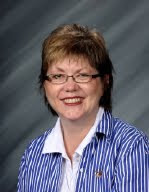Gladwell is convincing in his thesis, that success is much more than intelligence and hard work. He doesn't deny the importance of these attributes but identifies other variables like when, where, and how you were born. For example, in the junior Canadian hockey league, the cut-off age for moving from one level to the next is January 1st. A child born early in the year is going to be stronger and more mature than one born later. Because there are also levels within levels, the months-older, stronger players are moved up to a higher skill level within their age group. At higher skill levels, players learn better skills and so on and so on.
Why was Robert Oppenheimer chosen to head the Manhattan Project which produced the first atomic bomb? After all, 20 years earlier he tried to poison one of his professors. Gladwell says that because Oppenheimer was from a refined, elite family his abhorrent act was overlooked.
And what about Bill Gates? Another example of privilege. In 1968, Bill Gates was in the 8th grade when his elite private school purchased a computer. At a time when most colleges didn't have computers, Gates and his friends logged a lot of hours learning programming.
Gladwell also draws some conclusions about education in the United States. He believes that the length of our school year is one reason that American kids do so poorly in math when compared to other students. On a math test given around the world, twelfth-graders were asked how many of the questions covered material they had already learned. The Japanese said 92%. The American students said 54%. The Japanese go to school about sixty days more than Americans each year. Over a 12-year period, that's a lot more math.
Is summer vacation really too long? When it comes to the achievement gap between the "haves" and the "have-nots," Gladwell shares some startling statistics. The city of Baltimore began giving the California Achievement Test in reading not just at the end of each school year, but also in September when school begins. During the school year, the first through fifth graders on "free or reduced meals" scored and progressed equally with other students. However, when Baltimore begin testing again in the fall, the results were devastating. The poor kids had fallen behind by four points while the wealthiest kids test scores jumped 15 points. The difference--summer vacation. While the wealthiest kids were reading their own books, going to summer camps, etc., the poorer kids were spending boring days in front of the television.
What does this mean for us as educators? David Levin, the co-founder of the KIPP (Knowledge is Power Program) charter schools, believes that it means more school time for the disadvantaged. KIPP kids like Marita, a 5th grader in the South Bronx, go to school for ten hours a day, do two or more hours of homework a night, go to school some Saturdays as well as an extra month in the summer. The results--only 16% of kids in other South Bronx schools are performing at grade level in math. By the end of 8th grade, the KIPP kids are at 84%.
Applying Gladwell's findings to closing the achievement gap in education is far too simplistic, but the book can help us rethink and expand on ways to succeed in our attempts.

